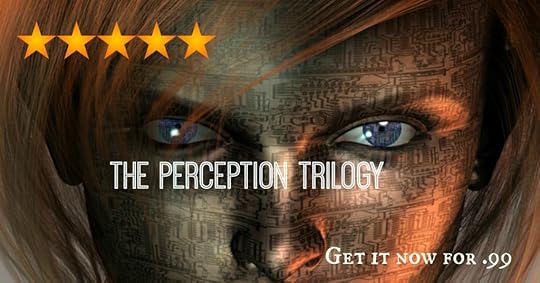Lee Strauss's Blog, page 15
May 31, 2016
Author Tips Tuesday – Crafting Your Best Story – Tip #3 Those Beautiful, Horrible Beginnings
Where I do I start, I ask you, where do I start???
If you’re like me, you’ve jumped around from starting position to starting position, pulling your hair out as you go. If you’re not like me, well, lucky you.
Beginnings are so difficult for me, I almost feel like apologizing that I’m trying to instruct on how to write them at all. The most I can hope for is that you will learn from my mistakes.
But you have to start somewhere. So pick a spot and start. It’s only by trying it on for size that you’ll be able to tell if it fits. And I can tell you this: you’re probably going to re-write your beginning many times, so don’t get too hung up on it at first. Just write it and move on.
But, for the purpose of the following instruction, let’s assume that you are at revision stage and want to nail that beginning sequence.
Let’s start with the first sentence.
What does a great first sentence look like? Let’s look at the examples from Finding the great idea.
GIRL ON THE TRAIN by Pauline Hawkins: There is a pile of clothing on the tracks.
MARTIAN by Andy Weir: I’m pretty much f*cked.
ALL THE LIGHT WE CANNOT SEE by Anthony Doerr: At dusk they poured from the sky.
ME BEFORE YOU by Jojo Moyes: When he emerges from the bathroom she is awake, propped up against the pillows and flicking through travel brochures that are beside his bed.
GINGERBREAD MAN by Lee Strauss: Clay from her sculpting class remained stubbornly under her nails.
Let’s look at these famous opening lines.
“All happy families are alike; each unhappy family is unhappy in its own way.”
Leo Tolstoy: Anna Karenina
“It was a bright cold day in April, and the clocks were striking thirteen.”
George Orwell: Nineteen Eighty-Four
“The past is a foreign country: they do things differently there.”
L. P. Hartley: The Go-Between
“I am a camera with its shutter open, quite passive, recording, not thinking.”
Christopher Isherwood: Goodbye To Berlin
“A green hunting cap squeezed the top of a fleshy balloon of a head.”
John Kennedy Toole: A Confederacy of Dunces
“We started dying before the snow, and like the snow, we continued to fall.”
Louise Erdrich: Tracks
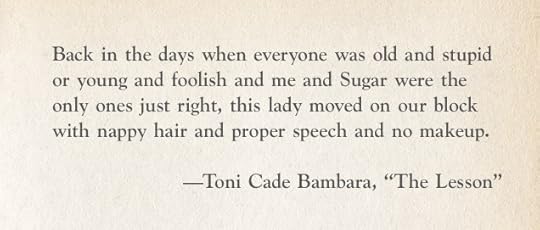
“Ships at a distance have every man’s wish on board.”
Zora Neale Hurston: Their Eyes Were Watching God
And possibly the all time best first sentence ever—
“It is a truth universally acknowledged, that a single man in possession of a good fortune must be in want of a wife.”
Jane Austin: Pride and Prejudice
What do you think of those first sentences? Take a look at your own first sentence. If that was all you had to go on, not the strength of the next sentence or paragraph, just the sentence itself, how would it strike you? Is it a strong sentence? Does it make you want to find out what comes next?
And let me share one more. This is from my son, many years ago when he was six:
“In the beginning it was very exciting and in the end it was even worse.”
(Pretty much wraps up the writing life, doesn’t it? :D)
Why is this important? Because opening lines hook us into reading the second line. And hopefully more. I know when I’m browsing for a book, this is what I do—I read the first sentence. And then the first paragraph. I may read the whole first page, but not always.
How many pages do you give a book before you put it down?
Don’t worry too much about your opening line or even your first page when you start a brand new story. Very rarely will you get it right the first time, or even the fifth. Your first page is something you will focus on when it’s time to do revisions. For now just write, “I’m writing a story about …and it’s not going to be very good at the beginning and that’s okay….” And keep going.
Next week we’ll look at the Inciting Incident.
May 26, 2016
Free or .99 Book Friday – Jump Cut by Libby Fischer Hellmann
**this post accidentally went out last Friday, but this is the week of the .99 sale. Sorry for any confusion or in convenience**

Chicago video producer Ellie Foreman has been absent from thriller author Libby Fischer Hellmann’s repertoire for almost a decade. Now, in Jump Cut, she’s back…and is soon entangled in a web of espionage, murder, and suspicion that threatens to destroy what she holds most dear.
Hired to produce a candy-floss profile of Chicago-based aviation giant Delcroft, Ellie is dismayed when company VP Charlotte Hollander trashes the production and cancels the project. Ellie believes Hollander was spooked by shots of a specific man in the video footage. But when Ellie arranges to meet the man to find out why, he is killed by a subway train before they can talk. In the confusion, she finds a seemingly abandoned pack of cigarettes with a flash drive inside that belonged to the now-dead man.
Ellie gets the drive’s contents decrypted, but before long discovers she’s under surveillance. Suspecting Delcroft and the ambitious Hollander are behind it, she’s unconvinced when Hollander tells her the dead man was a Chinese spy. Ellie and her boyfriend, Luke, try to find answers, but they don’t realize how far they have ventured into the dangerous echelons of hidden power– where more lives are on the line―including their own.
Only .99!
May 24, 2016
Author Tips Tuesday – Crafting Your Best Story – Tip #2 The Bones it Hangs On
In the last tip we talked about developing the Great Idea to the point where we have a file full of notes and an idea of the beginning, middle and end.
What’s the next step?
Building your structure.
Understanding structure early on in your writing process will really help you when it comes to getting other things right, like pacing and building tension.
Most of you will have heard of the three-act structure commonly used for play and movie writing. One thing I did after writing my first published novel was to re-write it as a screenplay. I highly recommend this as a writing practice tool. Script writing deals primarily with action and dialogue and making the most with the least. You only have 120 pages to tell the whole story and the margins are very narrow.
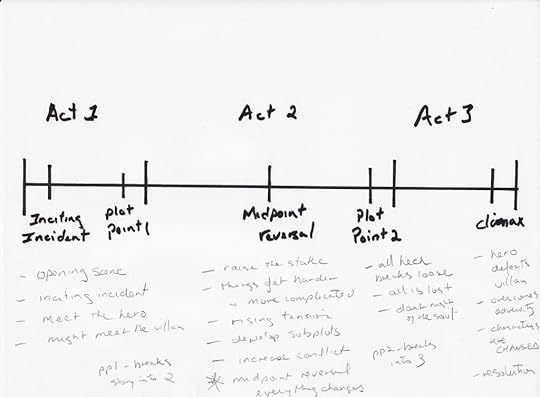
(Excuse my chicken scratch!)
At this point I look through my notes and pinpoint what my plot points are and where on the three act structure they should “hang.” If I’m missing something vital, I see this right away before I get too heavily into it. Especially critical is the midpoint, or what Janice Hardy coins the midpoint reversal. This is where something unexpected happens. It’s a twist that keeps the reader steadily hooked. Identifying your midpoint reversal early on will do wonders for preventing the chronic “saggy mid section”.
I’ll use GINGERBREAD MAN to illustrate.
Act 1- Set Up: The story opens with the victim (Teagan) an art student, scrubbing clay out from under her finger nails. She stays in when her roommate, Sage, our heroine, goes out with friends and ends up chatting to an anonymous person in the college forums online. We’re left wondering if this person is a good guy or bad. The book alternates between the two heroes, Sage and Marlow, Teagan and the villain.
Inciting Incident: Marlow warns Teagan to be careful, that a girl on campus has been raped before it happens. (At least from Teagan’s perspective.)
Plot point I: Teagan Lake is murdered, but then she shows up for her chat meeting with Marlow.
Act 2 – Conflict: Marlow, who’s a physics genius figures out that the Teagan he’s been chatting with is from another realm. He’s determined to save her from the villain in her realm. Marlow and Sage meet for the first time and he tries to convince her that Teagan is in danger.
Midpoint reversal: Sage finally believes Marlow that he jumped realms and that Teagan is in trouble. The rest of Act 2 is about how Marlow and Sage work together to try to find Teagan.
Plot Point 2: I don’t want to give this away in case you have yet to read Gingerbread Man, but like plot point 1, something unexpected happens to thrust us into the third act. (For those who have read it, it has to with what happens after Marlow gets his eyes layered.)
Act 3 – Climax and Resolution: Act 3 has new and tougher problems for our leads. The stakes are raised over and over. Again, I don’t want to spoil the climax, but this is where everything falls apart and then comes back together for a satisfying ending. (For Gingerbread Man readers, this happens in shack and the villain is revealed.) There is a twist in the resolution – the story arc completes but it leaves you wanting to read the second book. Hopefully!
Here is another breakdown from the book The Girl on the Train by Paula Hawkins.
(For those who haven’t read The Girl on the Train, this breakdown involves spoilers.)
Act 1 – Set up: We learn about our protagonist (main character), Rachel, that she takes a train into London every day, that she’s divorced, an alcoholic, and that she has a good imagination, particularly when it comes to a certain set of houses along the tracks. She sees a loving couple out in the garden most days. She calls them “Jess and Jason.”
Inciting Incident: Rachel has suffered another drunken black out. She knows she went to her old neighbourhood (to harass her ex-husband who’d cheated on her and his new wife Anna) and saw something bad. She just can’t remember the details.
Plot Point 1: Megan’s point of view: Megan and Scott are the couple Rachel’s been watching. We find out she’s been cheating on her husband but we don’t know with whom.
Act 2 – Conflict: “Jess” who is in reality Megan, goes missing.
Midpoint Reversal: Megan’s body is found.
Plot Point 2: Anna’s point of view: she discovers her husband Tom (Rachel’s ex) was cheating on her with Megan (the dead woman) and she begins to suspect him.
Act 3 – Climax and Resolution: Rachel remembers what she saw. It was her ex-husband Tom she saw with Megan the night she went missing. There’s the final confrontation between Rachel and Tom.
I’ll delve deeper into the meaning of each of these points in future tips.
One thing to keep in mind is you’re not tied to these early decisions. You may change the inciting incident or where it happens, you might decide on a new midpoint reversal and move your original one to the pinch before Act 3. This is just a way to get you started. It’s a tentative roadmap to the words “The End.”
A great exercise you can do is to go through your favorite stories and see if you can identify these seven points. If you want to learn more about developing structure, I highly recommend Save the Cat by Blake Snyder and his famous beat sheet. We’ll look at that more closely in another chapter.
Can you easily “hang” the plot points of your WIP (work in progress)?
Now that we’ve built the bones, the bones need some meat! We’ll tackle that next.
May 23, 2016
Do you buy iBooks?
It’s a long weekend in Canada and unfortunately for all the campers, just a bunch of rain – at least here on the west coast. I’m not camping, so though a little cold, I’m dry. And no snow to speak of, unlike what some other Canadian cities are reporting!
As a full-time writer, every day’s the same for me. I don’t even know it’s a long weekend until someone mentions it. 
May 20, 2016
Free Book Friday – Open Minds by Susan Kaye Quinn!
Susan and have been in the indie-published trenches for a long time, and I can reassure you that Open Minds is a great book. It’s free TODAY ONLY, so make sure to pick up your copy!
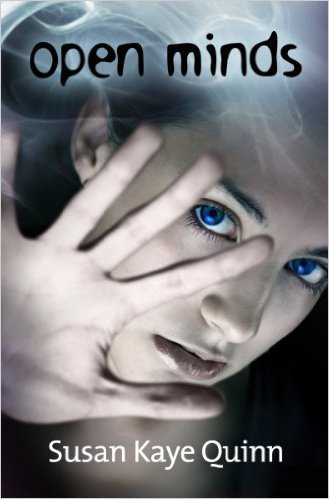
When everyone reads minds, a secret is a dangerous thing to keep. Sixteen-year-old Kira Moore is a zero, someone who can’t read thoughts or be read by others. Zeros are outcasts who can’t be trusted, leaving her no chance with Raf, a regular mindreader and the best friend she secretly loves. When she accidentally controls Raf’s mind and nearly kills him, Kira tries to hide her frightening new ability from her family and an increasingly suspicious Raf. But lies tangle around her, and she’s dragged deep into a hidden underworld of mindjackers, where having to mind control everyone she loves is just the beginning of the deadly choices before her.
Open Minds is the first novel in the Mindjack Saga, a young adult science fiction series.
May 19, 2016
Feels So Good to Be Back…
… in the world of A Nursery Rhyme Suspense. Since Hickory Dickory Dock I’ve been working on three other projects, all of which I can put aside now for the most part. I miss Marlow and Sage and can’t wait to see what happens next to them in their mysterious world of fictional Detroit University. I’m really happy to dive into Twinkle Little Star, and I plan to stay in this universe for the foreseeable future. This is where I feel the most at home as an author.
Even though I’ve only been away from my leads for three months, I need to remind myself who these two characters are, where they’ve been and where they’re going. At the end of Hickory Dickory Dock, the crime was solved, and Sage had gotten rid of the no-good men in her life. She finally admitted to herself that she was attracted to Marlow, even though he wasn’t the type of guy she normally went for. Unfortunately, Marlow hasn’t waited around for her heart and mind to open up to him, and now has a cute little girlfriend on his arm.


I know Fate won’t let them stay parted. In Twinkle Little Star they’ll have to work together again, this time to prove Sage’s innocence. But will her time in jail effect her GPA?
May 17, 2016
Author Tips Tuesday – Day 1 of Crafting Your Best Story
I’ve put together a workshop (and will soon release a workbook) called CRAFTING YOUR BEST STORY 26 Tips to Get You to The End. It’s based on a e-book I giveaway for signups to my young adult readers, but this one focuses on the adult writer/reader. I plan to post all the tips here over the next 26 weeks. It’s intended for the novice fiction writer, but more seasoned writers will find encouragement and inspiration from the tips as well.
Though I’ll refer to current bestsellers, most examples will come from my own work in order to avoid copyright issues.
Please leave any questions or comments in the comment section below.
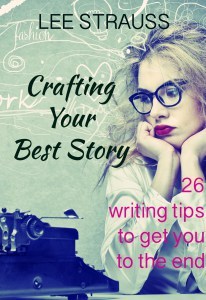
Tip #1
Finding the Great Idea
Every great story begins with an idea.
Not just an idea, but a hooky idea. A hooky idea is something you can sum up in one line.
For example:
An alcoholic rides a city train and becomes involved in a murder mystery. THE GIRL ON THE TRAIN by Pauline Hawkins
Separated from his crew, an astronaut embarks on a quest to stay alive on Mars. MARTIAN by Andy Weir
The lives of a blind French girl and a gadget-obsessed German boy before and during World War II intersect. ALL THE LIGHT WE CANNOT SEE by Anthony Doerr
A woman who has barely been beyond her English village finds herself caring for a wealthy, embittered quadriplegic. ME BEFORE YOU by Jojo Moyes
The cute girl that a college geek meets online is murdered, but shows up for the next internet meeting anyway. GINGERBREAD MAN by Lee Strauss
These one sentence synopsis are also called loglines.
So, you have a hooky idea, now what?
You need to develop the idea. Take some time to “think write.” Sit in the sun, put your feet up and mull it over. Who is this story about? You don’t need to know everything about this person, but gender, age and situation are important. What plot ideas that support your hook come to you? Jot them down. A few new ideas, variables, crazy possibilities will come to you–write them all down. How about a title? Pick a title. It may change but you need something to work with.
Once you have a story starting to form, open a file on your computer and call it Hooky Book (whatever your working title is) notes.
You’ll find that as you go about your day and your week, more ideas will come to you. Enter them in your note file. These don’t all have to make sense. They’re just ideas you may or may not use, but you don’t want to forget them.
Don’t rush this process. Give yourself time to let the creative juices flow. Consider it similar to baking a loaf of bread. Take time to knead your ideas together. Give it more time to sit and rise. And well, the baking… that takes much, much longer.
At some point you will have an idea of what the beginning, the middle and the end will look like (though these, of course, are subject to change). Now you’re ready for the next very important step…
May 14, 2016
The Perception Trilogy is on sale this week – Only .99!
For fans of Divergent and Hunger Games.
Genetically altered Zoe and natural Noah aren’t friends, but when an unimaginable truth comes to light, they have to trust each other to stay alive. A spellbinding series with over 300,000 downloads.
Amazon | iBooks | Nook | Kobo | Google Play
The Perception Trilogy is on sale this weekend – Only .99!
For fans of Divergent and Hunger Games.
Genetically altered Zoe and natural Noah aren’t friends, but when an unimaginable truth comes to light, they have to trust each other to stay alive. A spellbinding series with over 300,000 downloads.
Amazon | iBooks | Nook | Kobo | Google Play
May 13, 2016
Free Book Friday – The One You Love by Paul Pilkington
I read this a while ago. Really liked it.
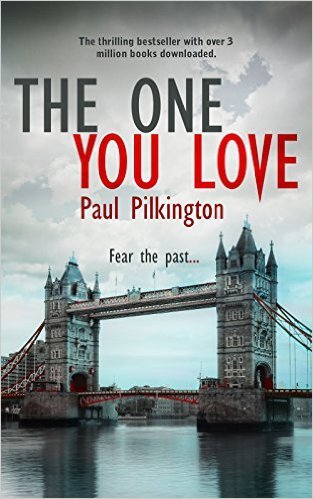
Emma Holden’s nightmare has just begun. Her fiancé vanishes, leaving the battered and bloodied body of his brother in their London apartment. Someone is stalking her, watching her every move. And her family is hiding a horrifying secret; a secret that threatens all those she loves. In a desperate race against time, Emma must uncover the truth if she ever wants to see her fiancé alive again.
Experience the gripping opening instalment of the best-selling Emma Holden suspense mystery trilogy. Packed with twists, turns and cliff-hangers, The One You Love is a can’t-put-down, suspenseful page-turner. With over three million downloads, more than 2000 five star reviews worldwide, and already a UK paperback top 10 best-seller, The One You Love is perfect for fans of Agatha Christie, Robert Galbraith, Harlan Coben and Linwood Barclay.
“It’s rare to find a thriller writer who can simultaneous propel us readers forward at a breakneck pace and yet engage our minds as we unravel puzzles brilliantly seeded through the story. Pilkington does just this. The One You Love will captivate and keep you up nights.” Jeffery Deaver, internationally bestselling author of the Lincoln Rhyme novels.

